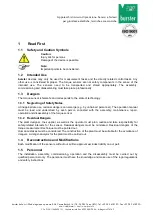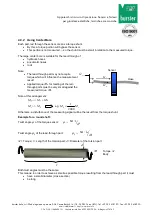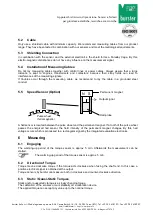
burster Italia s.r.l. · Sede legale ed operativa · Via Cesare Battisti, 16/18 · 24035 Curno (BG) · Tel. +39 035 618120 · Fax +39 035 618250
e-mail: [email protected] · http://www.burster.it
C.F. e P.IVA 11048400151 · Capitale sociale Euro 49.920,00 · R.E.A. di Bergamo 276749
Apparecchi di misura di precisione. Sensori e Sistemi
per grandezze elettriche, termiche e meccaniche
Hose
Sensor
ges
M
S
M
t
M
4.3.2 Using Center Bore
Each part, led through the sensor, means a torque shunt.
By this, a torque portion will bypass the sensor.
This portion is not measured
→ so the shunt must be small in relation to the measured torque.
The large center bore is suitable for the lead-through of
hydraulic hoses
pneumatic hoses
rods
Note:
The lead-through part may not acquire
torque which will influence the measurement
result
Applied torque
M
s
for twisting of the led-
through parts must be very small against the
measured torque
M
t
.
Note at this arrangement:
S
t
ges
M
M
M
S
t
M
M
e.g.
t
S
M
M
2000
1
Otherwise, a disturbance of the measuring signal will be the result from the torque shunt.
Example for a round shaft:
Twist angle
of the torque sensor:
⁄
Twist angle
of the lead-through part:
⁄
M
= Torque;
l
= Length of the torsion part;
d
= Diameter of the torsion part
Both twist angles must be the same.
This means: in order to achieve as small as possible torque resulting from the lead-through part it must
have a small diameter (cross-section)
be long
Torque
M
Body
M
l
d



































